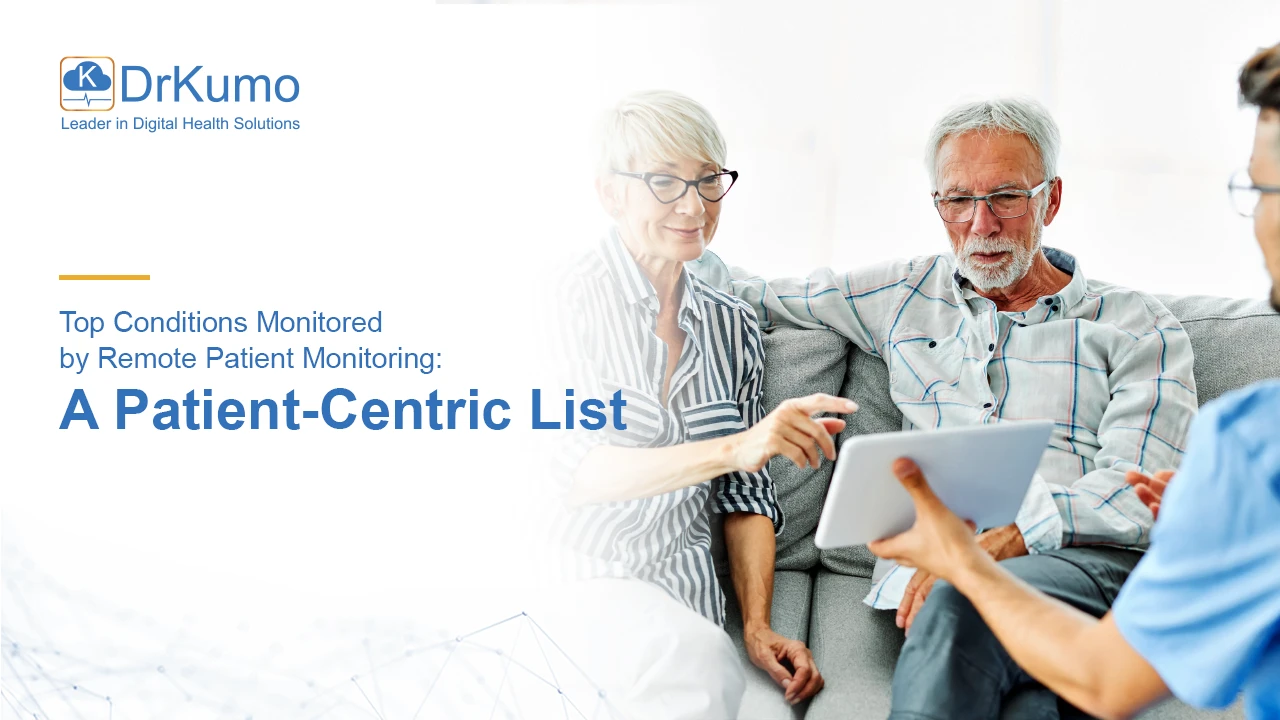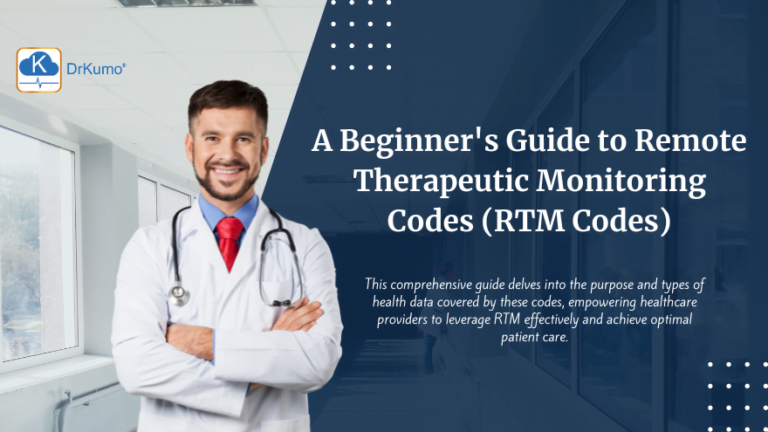Remote Patient Monitoring (RPM) has revolutionized healthcare, enabling patients with chronic conditions to receive timely, personalized care while reducing the need for frequent hospital visits. This approach leverages advanced technology to monitor patients’ health data, empowering patients and healthcare providers to make informed, real-time decisions.
This article explores the most common health conditions monitored through RPM and offers insights into patient experiences and outcomes.
What is Remote Patient Monitoring?
RPM allows healthcare professionals to monitor a patient’s health status outside the clinic, using devices that collect and transmit data securely. This data can include metrics like blood pressure, glucose levels, heart rate, and oxygen saturation, providing continuous information.
According to the CDC Foundation, chronic diseases such as heart disease, cancer, and diabetes cause seven in ten deaths in the United States annually, underscoring the importance of proactive health management. RPM benefits patients with chronic diseases by offering convenience, early intervention options, and improved quality of care.
A study by the American Heart Association found that RPM for patients with uncontrolled hypertension reduced heart attack and stroke rates by 50% compared to standard care and self-monitoring while also lowering the costs often linked to hypertension-related hospitalizations.
1. Diabetes Management with RPM
Diabetes is one of the most prevalent chronic diseases worldwide, affecting millions of people. For patients with diabetes, managing blood glucose levels is critical to prevent complications, and RPM has been shown to support diabetes management by enabling continuous monitoring and timely interventions.
How RPM Supports Diabetes Patients
RPM enables diabetic patients to monitor their blood sugar levels through devices such as CGMs or smart glucometers, based on their healthcare provider’s recommendations. These devices automatically record and transmit data to healthcare providers, allowing real-time monitoring. As a result, doctors can adjust treatment plans quickly, often preventing complications.
Patient Experiences and Outcomes
Patients with diabetes often feel relieved knowing their glucose levels are monitored around the clock. RPM helps patients manage their conditions from home and may reduce the need for frequent clinic visits, depending on individual care needs. Moreover, RPM can support glycemic control and help patients better manage the risk of complications when used as part of a comprehensive care plan.
2. Hypertension and Blood Pressure Monitoring
Hypertension, or high blood pressure, is often called the “silent killer” due to its lack of noticeable symptoms. Uncontrolled hypertension increases the risk of heart attacks, strokes, and kidney failure, making regular monitoring essential.
How RPM Aids in Hypertension Control
With RPM, patients use smart blood pressure cuffs to measure their blood pressure at home. The data is automatically sent to their healthcare providers, allowing for early detection of irregularities. Some RPM systems also include alert mechanisms that notify healthcare providers if a patient’s blood pressure reaches dangerous levels.
Patient Experiences and Outcomes
Patients with hypertension appreciate the simplicity and convenience of monitoring at home. RPM helps these patients avoid long waits at clinics, while healthcare providers can spot trends and modify treatment accordingly. Studies have shown that RPM can lead to a notable reduction in blood pressure for patients, improving heart health and lowering the likelihood of emergency interventions.
3. Chronic Obstructive Pulmonary Disease (COPD) Monitoring
COPD affects a person’s ability to breathe, leading to symptoms like shortness of breath, wheezing, and chronic cough. For COPD patients, RPM is essential in monitoring respiratory status and avoiding sudden health declines.
How RPM Benefits COPD Patients
With RPM, COPD patients often use pulse oximeters and spirometers to measure their oxygen saturation and lung function. This data enables healthcare providers to detect potential issues early and adjust medications as needed. RPM can also help patients understand triggers and manage symptoms more effectively.
Patient Experiences and Outcomes
Many COPD patients report a significant improvement in quality of life with RPM. Continuous monitoring helps reduce emergency hospitalizations, as symptoms can be managed proactively. Patients feel empowered and less anxious, knowing their respiratory health is constantly observed.
4. Heart Disease and Arrhythmia Monitoring
Heart disease, including conditions like arrhythmias (irregular heartbeats) and congestive heart failure (CHF), is a leading cause of death worldwide. Remote monitoring for cardiac conditions allows healthcare providers to detect issues early and manage them more effectively.
How RPM Supports Heart Patients
ECG and wearable heart rate monitors are commonly used in RPM for patients with heart conditions. These devices monitor heart rate, rhythm, and other critical indicators, and will notify healthcare providers of potential issues. RPM can provide continuous monitoring, unlike in-clinic assessments that only capture a single point in time.
Patient Experiences and Outcomes
Heart patients often find peace of mind with RPM, which enables early intervention. Real-time heart health monitoring allows doctors to quickly adjust medications or recommend lifestyle changes. Studies suggest that RPM as part of a broader treatment plan, can help reduce hospital readmissions and support better heart health outcomes.
5. Asthma and Respiratory Condition Monitoring
Asthma and other chronic respiratory conditions require constant vigilance to avoid flare-ups and complications. RPM offers a convenient solution for managing these conditions effectively.
How RPM Assists Asthma Patients
Asthma patients can use smart inhalers and spirometers as part of an RPM system to monitor their breathing and detect early signs of inflammation. Additionally, RPM can integrate with environmental sensors that monitor air quality, enabling patients to understand potential asthma triggers and adjust their behavior accordingly.
Patient Experiences and Outcomes
For asthma patients, RPM reduces the stress associated with unpredictable asthma attacks. The data allows healthcare providers to assess triggers and recommend preventive actions, leading to better symptom management. Some patients report fewer emergency room visits and feel more empowered in managing their asthma symptoms.
6. Post-Surgical Recovery Monitoring
After surgery, monitoring is essential to ensure proper recovery and prevent complications. RPM allows patients to recover at home while still under healthcare professionals’ supervision.
How RPM Supports Post-Surgical Recovery
RPM for post-surgical recovery involves monitoring vital signs such as heart rate, temperature, oxygen saturation, wound healing, and pain levels. This data is invaluable in detecting potential infections or complications early, allowing prompt intervention without requiring patients to return to the hospital.
Patient Experiences and Outcomes
Patients recovering from surgery feel more comfortable healing at home than in hospitals. RPM provides security, as healthcare providers can monitor their recovery remotely. RPM can support the recovery process by providing timely monitoring, which may contribute to better patient outcomes in some cases.
7. Mental Health and Behavioral Health Monitoring
While RPM is traditionally associated with physical health conditions, it is increasingly used for mental and behavioral health monitoring. For patients with conditions such as depression, anxiety, and bipolar disorder, RPM can play a crucial role in managing symptoms.
How RPM Assists Mental Health Patients
Mental health RPM solutions may include mobile applications that monitor symptoms, sleep patterns, and medication adherence. Emerging AI-driven systems have the potential to analyze voice patterns, facial expressions, and activity levels, though their clinical application remains under study.
Patient Experiences and Outcomes
Studies on digital health suggest that patients using RPM for mental health conditions experience improved engagement and a sense of support, as providers can proactively monitor symptoms and provide timely interventions. RPM in mental health care has been associated with better symptom management, fewer hospitalizations, and improved overall mental well-being.
8. Chronic Kidney Disease (CKD) Monitoring
Chronic Kidney Disease affects millions and requires careful management to prevent progression. RPM offers an efficient way for patients with CKD to monitor kidney function indicators regularly.
How RPM Benefits CKD Patients
Patients with CKD can use smart blood pressure monitors, weight scales, and urine test kits as part of RPM. By monitoring these metrics, healthcare providers can monitor kidney health closely and detect early signs of disease progression.
Patient Experiences and Outcomes
CKD patients appreciate the ability to monitor their health metrics from home, reducing the frequency of hospital visits. Through early intervention and continuous monitoring, RPM has been linked to improved kidney health outcomes and a reduced risk of kidney failure.
Why Choose DrKumo for RPM and CCM?
DrKumo is a leader in RPM and CCM. It offers cutting-edge technology that empowers patients to manage their health from home while staying connected to their healthcare providers.
With DrKumo’s Digital Health Solutions, patients benefit from easy-to-use devices that monitor vital health data such as blood pressure, glucose levels, heart rate, and more. The data is transmitted securely in real-time, allowing healthcare providers to monitor, assess, and provide timely interventions when needed.
Patient-Centric and Innovative
DrKumo’s platform is designed with patients in mind, making it user-friendly and accessible. Patients managing chronic conditions like diabetes, hypertension, and COPD can enjoy peace of mind, knowing their health is monitored continuously. Additionally, DrKumo’s solutions are designed to support early detection, which may help reduce hospital readmissions and enhance patient care.
How DrKumo Enhances Patient Care
By choosing DrKumo Digital Health Solutions, patients invest in their health and partner with a trusted digital health solutions provider that prioritizes comfort, convenience, and proactive care. With advanced technology, personalized support, and a focus on patient well-being, DrKumo offers a reliable path to better health management.
Takeaways
RPM transforms healthcare by enabling patients to manage chronic conditions conveniently from home. With continuous monitoring and real-time data sharing, RPM empowers patients and providers to respond quickly to health changes, reducing complications and improving outcomes.
For those managing diabetes, hypertension, COPD, and heart disease, RPM offers peace of mind and a proactive approach to better health. DrKumo’s innovative RPM Digital Health solutions are designed to enhance your health journey, keeping you connected to your care team and closely monitored so you can confidently live healthier.
Ready to manage your health more effectively and comfortably from home? Discover how DrKumo can support your health journey. Learn more about DrKumo Digital Health Solutions today!
Disclaimer: This article is intended for informational purposes only and should not be construed as medical advice. Always consult with a healthcare professional for any health concerns or before making any decisions related to your health or treatment.








